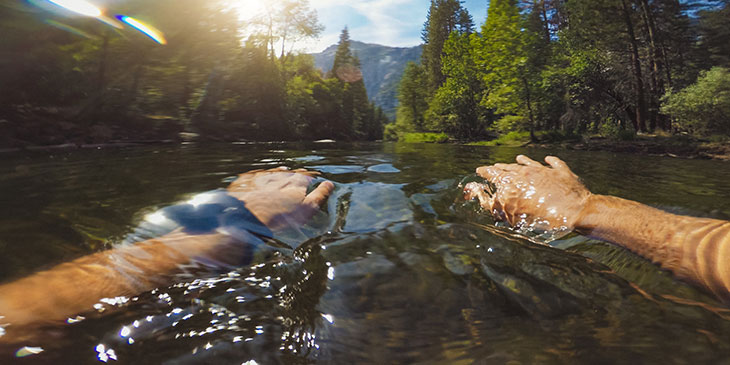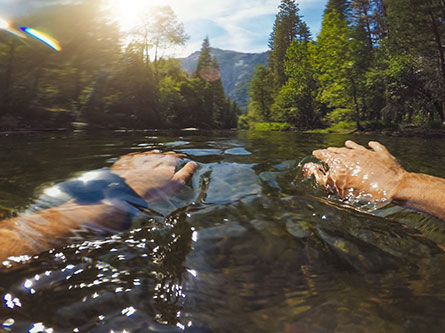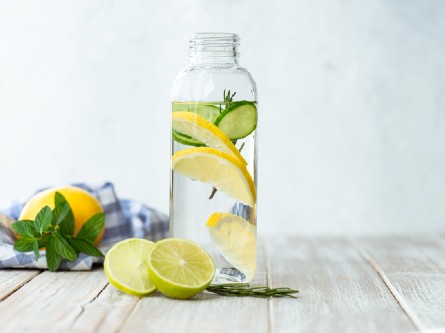
In the summer heat, local rivers can be a great place to cool off. As we enjoy the natural beauty of our rivers, it's important to keep water safety top of mind.
In May 2024, the Centers for Disease Control and Prevention (CDC) reported a new study that drowning deaths were on the rise. After decades of decline, 4,500 people died of drowning each year from 2020-2022. That's 500 more people per year than in 2019.
As many of us head to lakes and rivers this summer, keep these safety tips in mind.
What causes you to drown in a river?
Swimming at the river is not like swimming in a pool.
In Northern California, rivers bring dirt and rocks down from the Sierra Nevada mountains. This makes the water cloudy and brown so you can't see the bottom. Jumping in is dangerous because you can't see if there are rocks, tree branches, or other debris under the water.
Snow run-off also makes the water cold, which can shock your body when you jump in.
River currents are often fast. This means that swimmers can quickly be carried downstream. Even the strongest swimmers can be pulled under.
The fast current often washes away riverbanks, creating sudden drop offs. You may be able to wade out in the water for a while, but another step forward might lead to a drop off.
What are ways to help prevent river drownings?
Here are some important safety reminders to help prevent drownings on rivers and lakes.
1. Children should always wear a life jacket
In Sacramento County, children under age 13 must wear a life jacket before getting into any public waters. Even if it's not required in your county, all children should wear a life jacket.
Make it a family rule for teens and adults to also wear life jackets to stay safe at all ages. You can borrow life jackets at many California beaches and waterways as well as some fire stations.
Learn how to use a life jacket from the American Red Cross
2. Don't swim alone
If you do get into trouble or feel uneasy in the water, you should always have someone there to help you or call 911.
3. Watch children at all times
Children can drown in 2 inches of water. Designate someone to watch the children near water. Even if you're at a party, switch out every 15 minutes to make sure at least one person is paying full attention. Don't leave children under the care of other children.
4. Obey signs near rivers and lakes
Look for "No Swimming" or "No Diving" signs and obey them. They are there for your safety.
5. Boaters should drive carefully
Boaters need to be courteous, safe and follow the rules of the water. Maintain a safe speed and know who has the right‐of‐way.
Alcohol, drugs, and boating don't mix. Using alcohol or drugs can impair your judgement and slow your response time.
Learn 7 tips to keep your children safe around water
What should you do if someone is drowning?
If you see someone who appears to be in trouble in the water, follow these steps:
- Get help or yell for help. Find a lifeguard if there is one or call 911.
- If you're in open water, reach towards the person with a pole, branch or paddle. You can also throw out a life jacket or ice chest to help them stay afloat until they're able to get to shore or help arrives.
- Check if they're conscious. If the person has been safely pulled from the water, shout to get a response. Tap their shoulder if they don't respond, and shout again
- If they don't respond, start CPR. Put them on their back on a firm surface. Begin chest compressions, open their airway, and breathe into their mouth.
Be prepared to use drowning CPR with rescue breaths
River safety resources to share
- Safe Kids Greater Sacramento, led by UC Davis Health, offers river and pool safety posters in seven languages.
- Sacramento County Regional Parks shares information on local parks and waterways.
This blog was reviewed by Jennifer Rubin, injury prevention specialist in UC Davis Health's Trauma Program.




